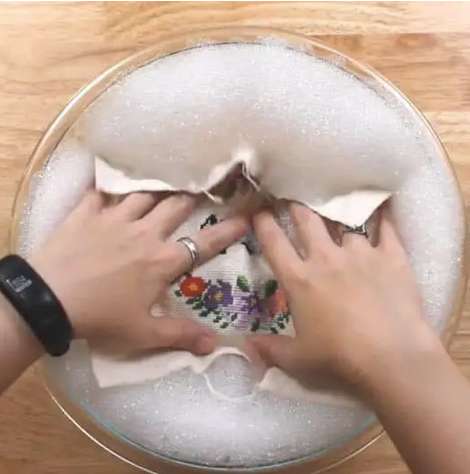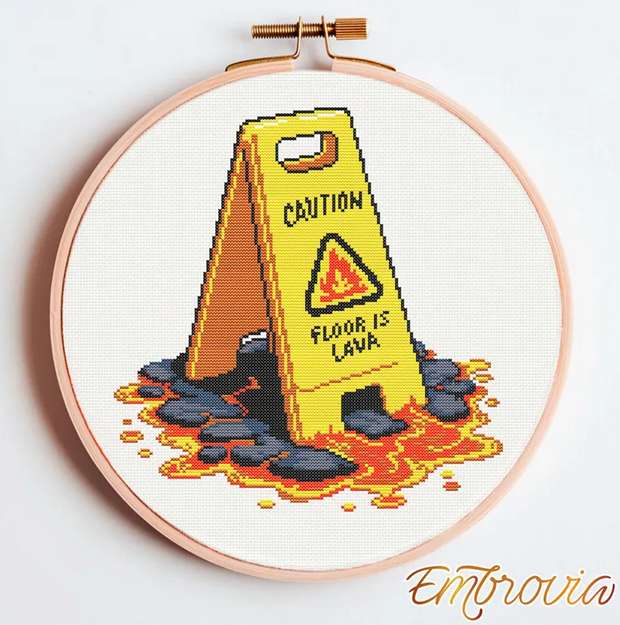 When you’re just making a small cross stitch project such as a bookmark, or something that is going to be displayed in a hoop, you don’t necessarily have to give a lot of thought to finishing it by washing or ironing the project.
When you’re just making a small cross stitch project such as a bookmark, or something that is going to be displayed in a hoop, you don’t necessarily have to give a lot of thought to finishing it by washing or ironing the project.
Of course if you get it dirty, which can totally happen just from the oil on your hands or if you’re eating (or have pets) around your project, you’ll want to wash it no matter the size. But larger projects that are going to be framed in particular benefit from a little extra attention before you declare them finished.
Notorious Needle has good tips on how to wash your cross stitch, and, if you need to, how to iron it.
It’s actually not that different from how you might wash and block a knitting or crochet project, and it’s really important to do with those big projects even if it doesn’t look like you got grime on it. That’s because the oils from our hands and the skin cells that get on the project while we stitch can discolor the fabric and even deteriorate the fibers in the fabric or the floss.
Washing is also essential if you used any water-soluable ink pens on your project, or if the design was stamped on the cross stitch fabric before you started.
Once you’ve gotten it all clean, if you still find that there are creases where your hoop was holding the project, you can also iron it.
The key with both of these steps is to treat your project with care: use lukewarm water and gentle, clear soap, don’t wring it out aggressively, don’t put a hot iron directly onto your project.
These few steps might seem like a pain when you just want to be done, but they’ll take your project from done to finished and make sure it looks as good as all the work you put into it.
Click the links about to get all the details on how to finish your projects the best possible way.
[Photo: Notorious Needle]
 Embrovia is a cross stitch designer with a lot of funny designs, plenty of ghosts and cats and other fun things for you to stitch. Let’s take a closer look.
Embrovia is a cross stitch designer with a lot of funny designs, plenty of ghosts and cats and other fun things for you to stitch. Let’s take a closer look.